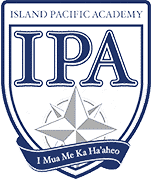The Grade 4 students wrapped up their project-based learning (PBL) integrating units on Hawaiʻi/Hawaiian Culture and Business/Finance with their inaugural Grade 4 Luau. The luau was conceived as a business venture, completely planned and organized by the Grade 4 students.
To start, the students defined and organized the needs of the business into various committees, including Leadership, Marketing, Finance, Food, Entertainment, and Decorations. Then, just as with a real business, each student was required to apply for the job of their choice.
The application process was authentic. Each student applied for two positions by completing an employment application. Once their applications were submitted and reviewed, the students were invited in for an individual job interview with either Steve Ross, Elementary Principal, or Katherine Jones, Elementary Sustainability and Innovation Coordinator. The students were prepared for what to expect by IPA’s Director of Human Resources, Camille Pinard. She provided them with tips on how to prepare and conduct themselves effectively and professionally in a job interview. The students took the tips to heart, as many arrived at their interview with letter of reference in hand and greeted their interviewer with a handshake and eye contact. They were poised throughout their interviews, confidently answering questions pertaining to their desired job position.
“In being able to interview for the Committee positions, the students were able to not only have a real-world experience, but they were also able to really showcase themselves by sharing with with us their individual strengths during their personal interview,” explained Jones.
With the hiring completed and committees formed, the students created action plans for their responsibilities for the luau. The finance committee members developed a budget and determined how to meet their fundraising goals based on ticket price and projected sales. They worked with Accounts Receivable Manager, Lisa Dalida, who helped them with the financial aspects of the event. The marketing committee designed flyers with order forms, which were advertised around campus and sent home in Friday Folders, and created and printed the tickets for the events. Students on the entertainment committee were responsible for the performances during the dinner show, from choreography and music to lighting and production. And the decorations committee members worked on gathering decorative greenery prior to the event and putting together the floral arrangements, hanging the streamers, and blowing up the balloons on the day of the luau.
“The luau project integrates nicely with our hoʻomau (economics) unit of inquiry,” explained Nicole Ogimi, Grade 4 teacher. “This project allowed the students to learn, first hand, how to put on a cultural event for the community. When they all worked together and did their part, the whole event came together beautifully.”
The students also learned about Hawaiian and Polynesian culture, food, and cooking techniques in their preparation for the luau. Under the direction of Sa’o Faulkner, Grade 4 teacher, and her family, the students constructed an umu, or an above-ground imu, on the Big Field, which was used to cook traditional Samoan foods for the luau guests to sample.
“The umu demonstration was an activity to connect what takes place in preparation for a feast. We decided to demonstrate the umu because it is a cooking method used in Polynesia,” shared Faulkner. “It was an opportunity for the students to experience what early Hawaiians or Islanders did to cook food for a feast. We also used many of the food resources that were commonly used by Islanders and what was brought along with the voyagers as they settled the Polynesian Islands.”
The students helped to create the umu frame of banana tree trunks, fill it with river rocks, and cover it with wood pieces and coconut husks to set on fire. After the combustible materials had burned away and the heated river rocks were ready for cooking, Ashley Faulkner and his family placed the foods to be cooked on the hot rocks. Everything was covered over with banana leaves and other greens to trap in the heat, and the whole umu was covered with wet canvas to seal it during cooking. Everyone at the luau had a chance to sample baked taro, banana, sweet potatoes, palusami (taro leaves with coconut cream), faiʻai pilikaki (canned mackerel with coconut milk), moa (whole chicken), and luau puaʻa (pork with taro leaves) cooked in the umu, in addition to their luau plates of kalua pig and cabbage, laulau, rice, salad, haupia, and a drink.
“I am so pleased at the great learning happening throughout this learning experience – from the collaboration, critical thinking and problem-solving skills to the real-world job preparation experience,” said Ross. “And there were also many opportunities for students to meaningfully use and develop their math and language arts skills as they prepared for the luau. I’m so proud of all of them.”
Nearly 200 tickets were sold for the luau, and the proceeds from the event will go towards learning trips for next year’s Grade 4 students.

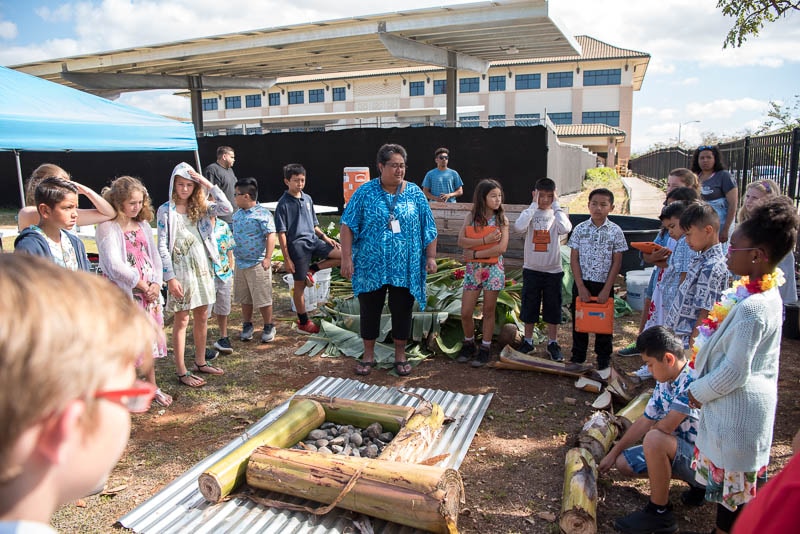
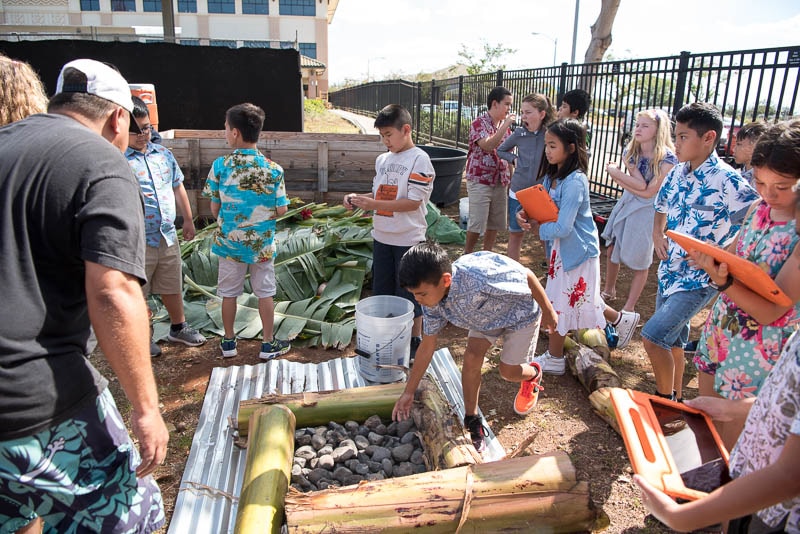
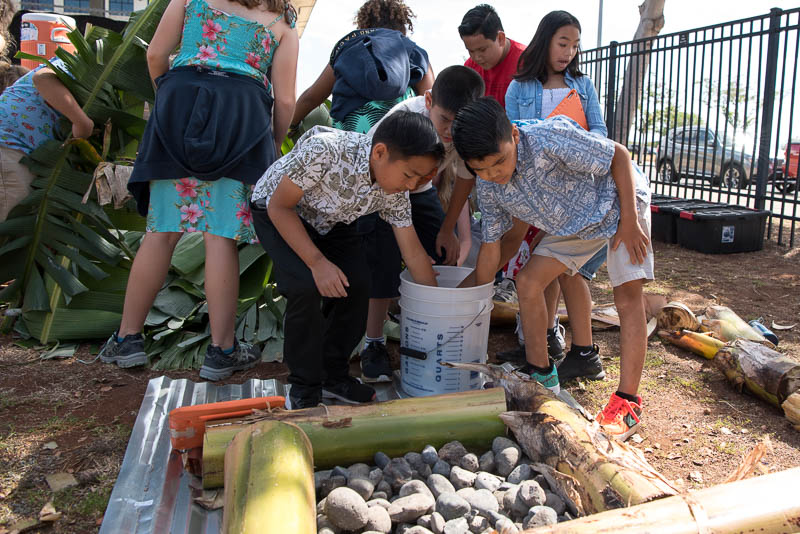
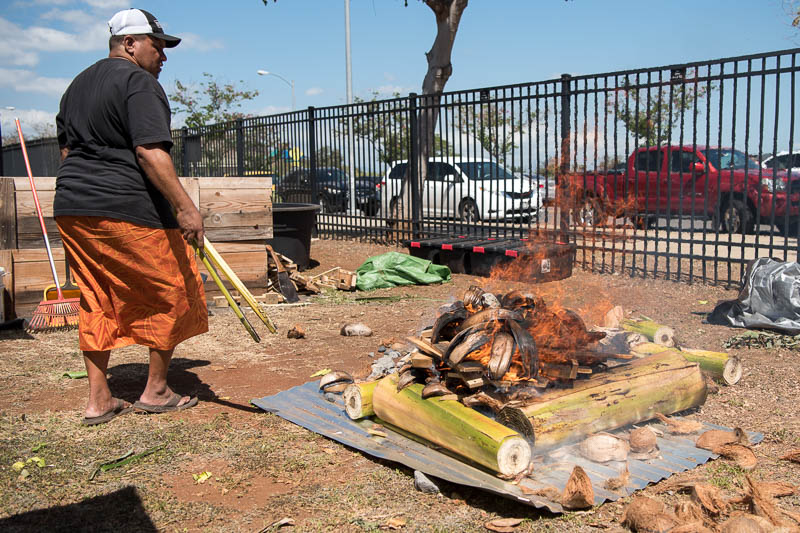

“Slack Key” by Mikejames 718 is licensed under CC BY 3.0.


